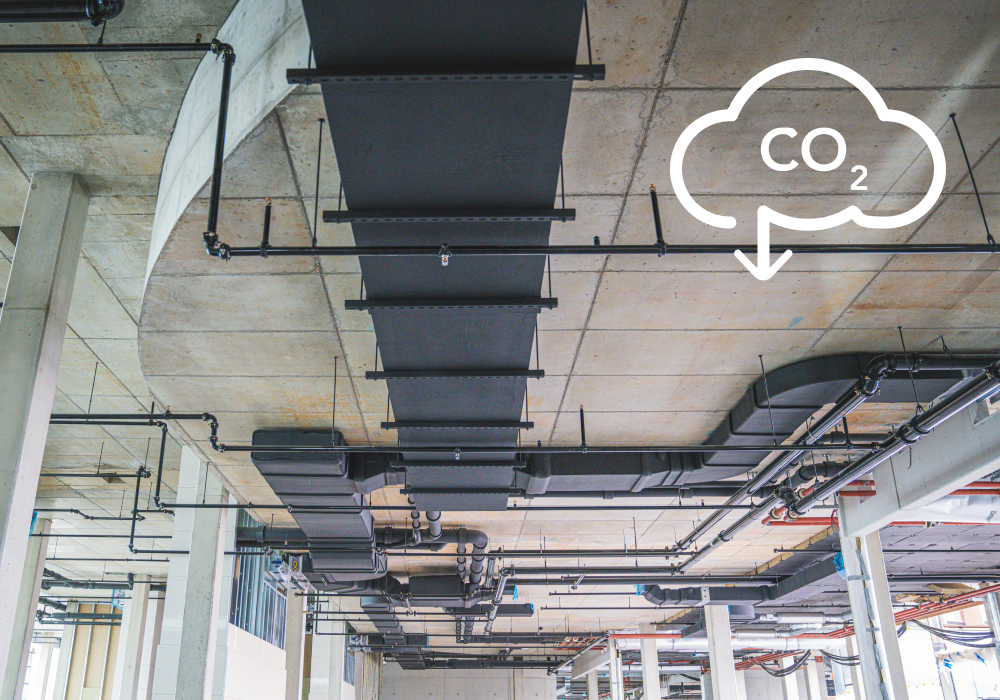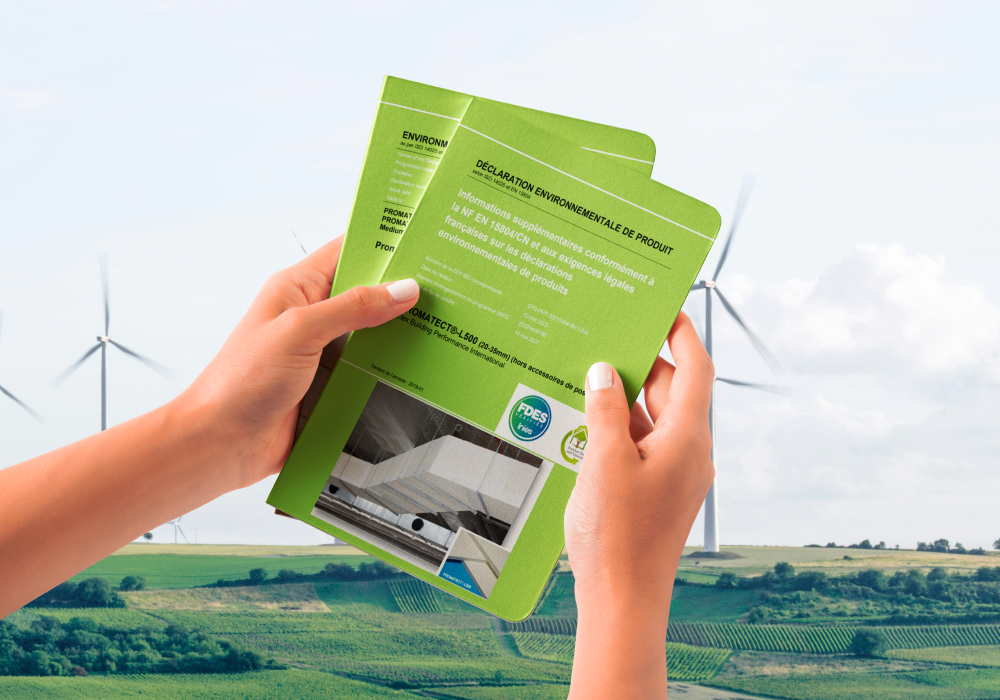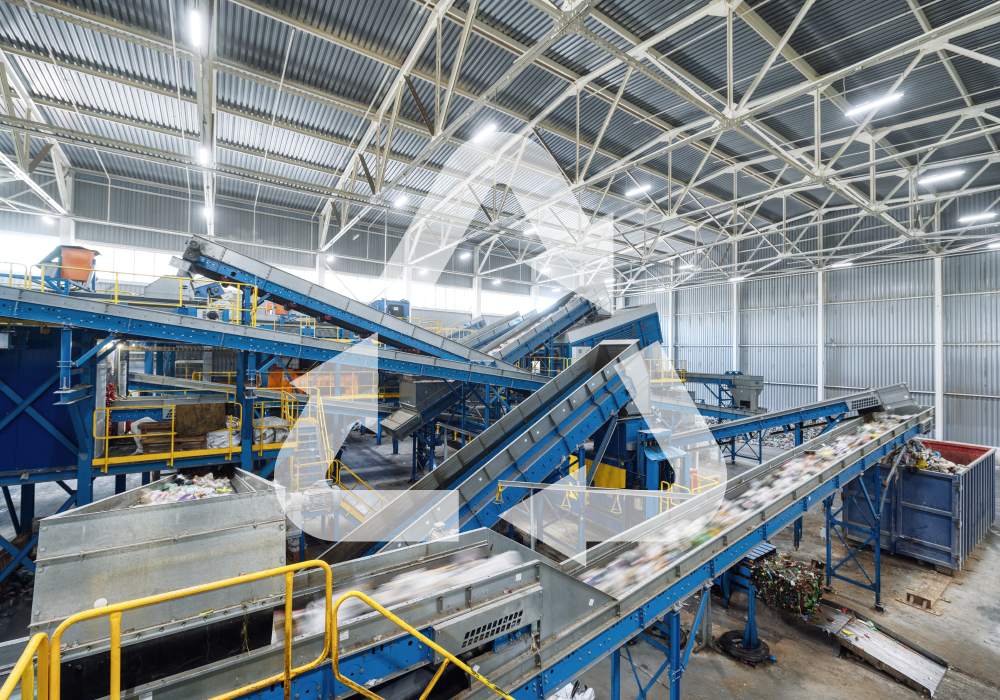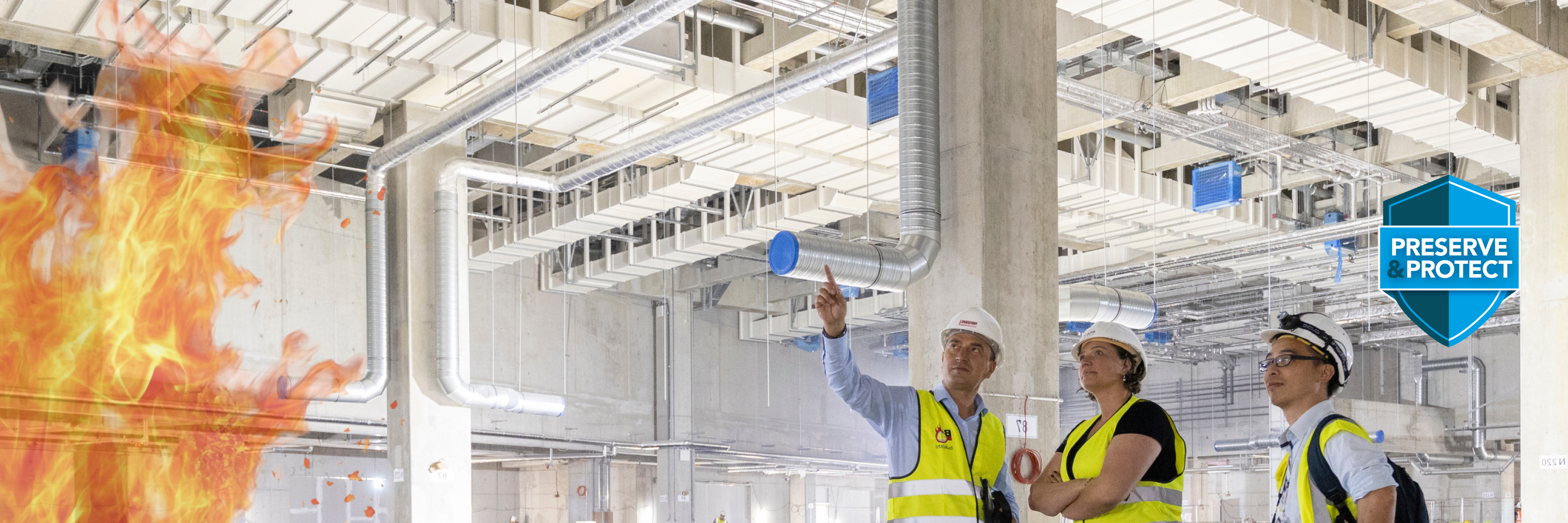Why our calcium silicate ducts are more sustainable

A comparative study delivers the undisputable proof: a ducting system built from calcium silicate boards has a smaller carbon footprint than the alternative ducting solutions in the market. Made from naturally abundant, responsibly sourced materials, these boards help to reduce a building's environmental impact. If you use our smoke extraction duct also for comfort ventilation, you get a double bonus: you use sustainable boards to design a sustainable HVAC system that needs less space and less fan energy. Download the report for an in-depth analysis of the product lifecycle of our fire protection boards, from cradle to gate.
Our PROMATECT ducting boards come with GOLD certificate

All our PROMATECT boards come with a Eurofins Indoor Air Comfort Gold Certificate ( IAC Gold). This prestigious certification is only awarded to products that meet the highest standards for low emissions of volatile organic compounds (VOCs) in indoor environments.
- Product with best-in-class low VOC emissions, contributing to healthier indoor air quality
- Compliance with European legal requirements and voluntary labels like BREEAM, LEED, WELL, and Blue Angel
- Regular factory audits and product testing to ensure ongoing compliance4
Why COMBI-PROMADUCT is the most sustainable option
Calcium silicate-based for sustainability
Made from naturally abundant, responsibly sourced materials, our boards help to reduce a building's environmental footprint. The combination of sustainability and health performance makes our calcium cilicate boards a responsible choice for low carbon building projects.
EcoFlow Ventilation Initiative
Our large-dimension ducts optimize the natural airflow in a building, reducing the need for mechanical fans to transport the air through the ducting channels. Academic research shows that this can save up to a 95% in fan energy consumption for daily comfort ventilation. This system will substantially reduce your building’s operational carbon footprint.
![]()
+ 30 years of proven durability
By designing a PROMADUCT system, you can install a custom made ductwork, built on site from a material with a low VOC and a long life. With more than 30 years of proven reliability, this ductwork solution offers durability, recyclability and re-usability.
A sustainable production process

Discover the secret behind the unique qualities of the PROMATECT® board. Our automated production process is the result of years of research and development. Throughout the manufacturing flow, we mix naturally available ingredients and transform them into a unique fire protection board. We now use super heated steam technology, combined with a heat pump, to dry the boards. This reduces the energy needed by 66% compared to traditional drying methods. Download the article for a stap by step journey thorugh our production process.
EPD’s as proof

All our boards are produced in a responsible and sustainable way. Our EPD’s give you a full picture of the entire lifecycle of our ducting boards, from sourcing and transporting our raw materials until recycling. The EPD offers full transparency and allows you to design a sustainable solution that meets today’s stringent building criteria.
A strong focus on circular materials

Each calcium silicate board used in our ducting system comes with a Circular Content Declaration Form, providing transparent information on the percentage of circular material used and their environmental impact. This makes it easier for you to incorporate truly circular products into your projects, supporting your sustainability goals. Our boards also contribute to gaining credits in sustainable building certification schemes and benefit projects focused on using circular materials, aligning perfectly with today's construction’s push for circularity and eco-conscious design.
